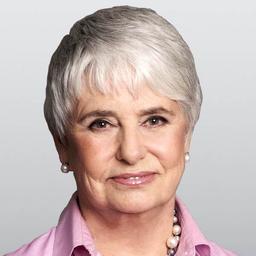Commentary
According to CRT, everyone is a member of either the oppressed or the oppressor class. Skin colour or blood quantum determines one’s class. Upright character and moral behaviour cannot absolve members of the oppressor class from guilt, while success in life cannot release members of the oppressed class from victimhood. One’s social and political fate is predetermined and unrebuttable. The accumulation of students’ and parents’ testimonies to the negative effects of CRT and intersectionality in Ms. MacIsaac’s article speak to the missionary zeal of the instructors, often resulting in children’s distress around friendships CRT has made awkward.
One father in B.C. told The Epoch Times that each student in his daughter’s grade 8 class was asked to place himself or herself on the “
Wheel of Privilege and Power.” This is a graphic tool used in anti-racism programs to aid children in calculating how much “privilege” their identities have conferred on them relative to other identity groups. There are many different categories. “Skin colour” and “indigenous peoples,” of course. “Wealth,” naturally. Also “Sexuality,” “sex” and “gender.” Then there’s “mental health,” “formal education,” “neurodiversity,” “housing,” “language,” and “citizenship.”
It’s a bit of a mishmash. Skin colour is immutable. So are many disabilities. But bilingualism can be acquired—maybe not as seamlessly as for those blessed with bilingual homes from birth, but certainly to the point of perfect functionality.
In fact, much of this wheel can be reduced to the “luck of the draw.” There’s no question that “stable” mental health, at the centre of the wheel, beats “vulnerable” on the rim of the wheel in meeting life’s challenges. Ditto for disabilities, both physical and neurological. It’s fair to call the able-bodied and the mentally stable privileged. But such privilege—and here we could throw in high IQ and physical beauty as well—must be ascribed to Nature, notoriously indifferent to Marxist principles of equity. These are problems that cannot be “solved” even by the most strenuously observed anti-racist practices.
The glaring irony in this wheel is its failure to include the greatest privilege of all, one that is available to people of all races, ethnicities, and social classes: namely, the privilege of growing up in a stable, loving home with two married parents. This is the single most likely formula to promote social and economic success in children. By coincidence, marriage is apolitical by nature and a foundational pillar of society that predates both the state and public education systems.
Thus, Marxists consider marriage and the nuclear family antithetical to their purpose. Since the family is the institution in which private property is accumulated and passed along to offspring, it fosters inequity. Marxism’s utopian vision therefore calls for the destruction of the family as a complement to the destruction of capitalism. Small wonder that loving and protective parents are perceived as an obstacle to CRT-driven pedagogues’ mission to wrest control over their children’s vulnerable minds.
CRT dissidents will be encouraged by a new
book, published in September, by economist Melissa Kearney, titled “The Two-Parent Privilege: How Americans stopped getting married and started falling behind.” In it, Ms. Kearney brings data-based evidence to bear in making her case that the decline of marriage leads to economic vulnerability producing a cascade of other problems.
She observes that marriage is a common denominator in the likelihood of home ownership and employment stability, as well as advantages for children in education, social environment, and ambitions. The trouble is that marriage is increasingly perceived as desirable only by the upper class, where rates are holding steady. As the rates of marriage decline everywhere else, Ms. Kearney notes the compounding effects on children’s behaviours and educational outcomes. She also points out the collateral damage to adult men, for whom marriage has traditionally been the gateway to maturity, responsibility, and ambition.
Ms. Kearney’s is not the first treatise we have seen on this subject. In 1965, the
Moynihan Report, by U.S. Assistant Secretary of Labor Daniel Patrick Moynihan, aroused controversy by defying the conventional social-science wisdom that economic conditions determine social conditions. Moynihan argued the opposite was the case, just as Ms. Kearney does. Between Mr. Moynihan and Ms. Kearney, we have heard much the same from
a litany of sociologists and cultural observers, such as Charles Murray, David Blankenhorn, James Q. Wilson, Kay Hymowitz, and others.
In 2014, for example, a
study conducted by a team at the
Equality of Opportunity Project was published on the importance of family structure in accounting for the future economic outcomes of children. Mobility was a key performance indicator. The team found that children raised in communities densely populated with single mothers were significantly less likely to experience absolute and relative mobility. Many studies show that two-parent married families are more likely to produce economically successful children. But this is the first study to show that even lower-income kids from single-parent families enjoy spinoff success from growing up in communities
characterized by two-parent families.
Such studies, and even the once widely hailed Moynihan Report are held in bad odour today. Any suggestion that cultural habits contribute to deficits in economic and social outcomes contradicts the Marxist strictures that dominate public discourse. So if one prescribes “white” solutions, such as traditional marriage, to alleviate deficits in non-white communities, along with a return to character formation in pedagogy—a strong work ethic, cultivating “
grit,” consequences for anti-social behaviour—one is accused of paternalism at best, or a form of racism. In the case of “settlers” encouraging the adoption of Western strategies for success amongst “colonized” indigenous peoples, the paternalism is ratcheted up to “cultural genocide.”
In
conversation with Bari Weiss of The Free Press, Ms. Kearney said that one pre-publication reviewer told her publisher, “You should not be publishing a book in 2023 that calls for a return to marriage.” In the not-distant past, conservative thinkers who wrote books on the value of marriage may have been disdained by progressives, but their books were judged on their merits. This reviewer’s heightened sensitivity on the issue had nothing to do with Ms. Kearney’s scholarship, but everything to do with deference to the wheel of privilege as the only “correct” explanation for social inequality.
Our children will not, it seems, be liberated from CRT’s toxically flawed “
wheel of fire” any time soon.
Views expressed in this article are opinions of the author and do not necessarily reflect the views of The Epoch Times.







